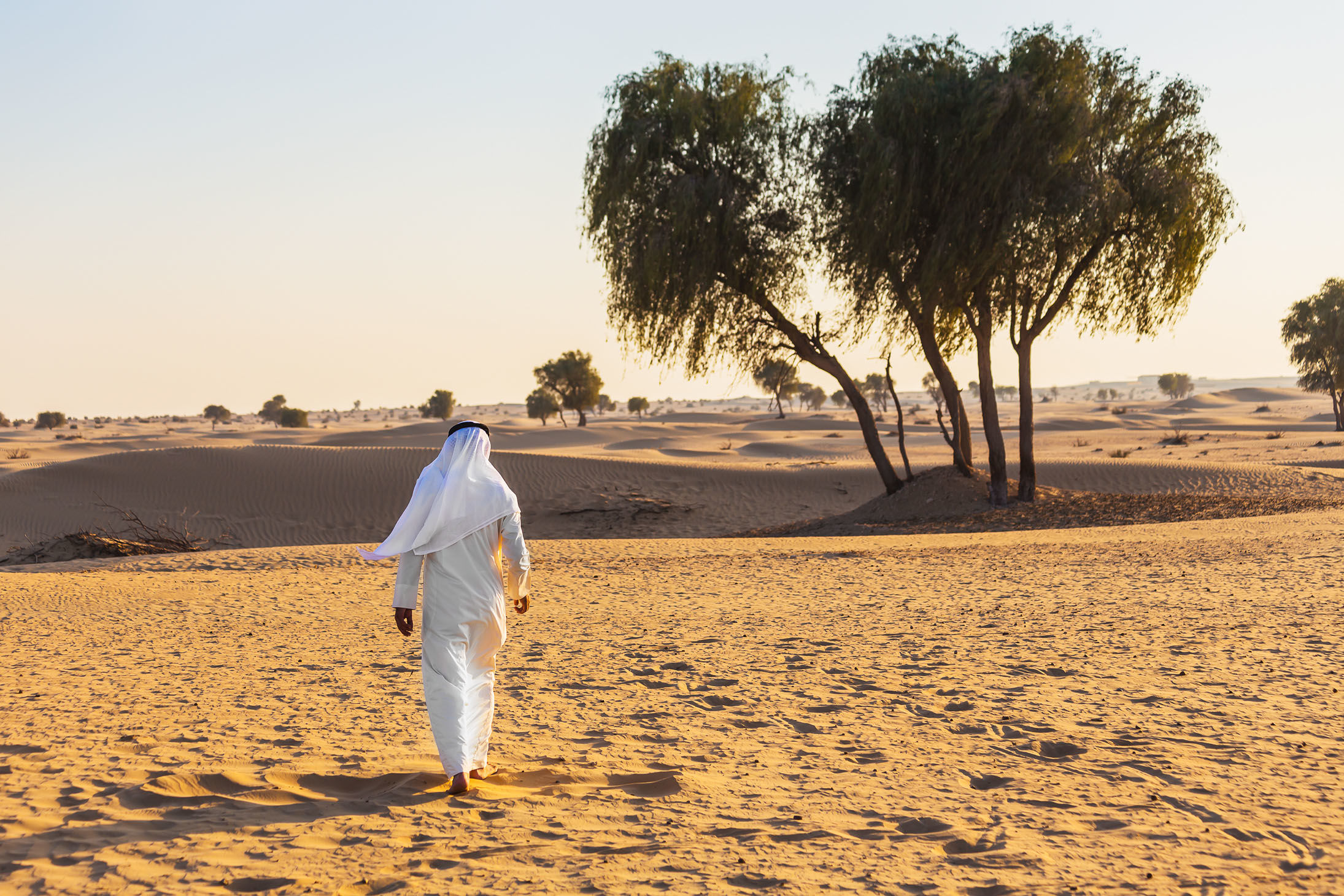
A well-kept secret, Yemeni Sidr honey is one of the very finest mono-floral honeys in the world. It’s valued highly because of its history, its limited availability throughout the year, and its special nutritional and medicinal properties. It comes from the Sidr tree which can be found across the Middle East. In the United Arab Emirates, it has been protected in recent years by a government initiative to digitally record the Emirate’s indigenous trees. Its valuable properties go back to ancient times with the Al Sidr trees being mentioned in the Holy Quran. The fruit, leaves, roots and bark are used to treat a variety of ailments. Its curative and anti-inflammatory properties have been trusted for centuries from disinfecting wounds to healing skin problems.
Sidr honey comes from the flowers of the Sidr tree or Ziziphus Spina-Christi, its botanical name. It’s known by other names including the Jujube, Lote or Christ’s thorn tree. It’s an evergreen that grows in coastal, desert, and semi-desert areas. It is native to parts of Africa and Asia and you can find it in India, Pakistan, Ethiopia, Egypt, Libya, Sudan, and the southern part of the Arabian Peninsula. It also grows in parts of Yemen where honey is a deep rooted part of the culture and Sidr honey is often known as Yemen honey. It is a sturdy and deep-rooted tree which can withstand adverse weather conditions like drought and floods. The average tree size is between 7-8 metres high, the flowers are yellow and the fruits are round, yellowish turning to a reddish colour when mature.
In the Quran the Sidr Tree is one of the plants of Paradise and is referenced to emphasize its beauty, strength and grandeur. The fruit of the tree was the first thing Prophet Adam (PBUH) ate when he was made to descend to earth because of its great source of energy. The tree was used during the time of King Suleiman (PBUH) and the Pharaohs used it to build palaces and temples. It is believed by many that the ‘Crown of Thorns’ as described in the Bible worn by Jesus at his crucifixion was made from the branches of this tree.
Sidr leaves as a part of the cultural heritage of the United Arab Emirates. Al Hemyan is an oral history project helping create a digital archive for public exhibits and art in Abu Dhabi. Hamda Al Bu Falah, a contributor, and student of the New York University said, "The last generation that I think used Al Sidr leaves was my great-grandmother. It would have been used as shampoo or body wash. The story goes that they used to pick the leaves, grind them and mix them with water when it becomes a sort of soap. We have so much today compared with a few generations back. Al Sidr leaves make me look at what we have right now and how far we have come."
Powdered Al Sidr can still be purchased in herbal shops today and forms the basic ingredient of Oman's Sidr range of herbal shampoos.
All parts of the Sidr tree provide health benefits. The fruit is a great source of energy, the seeds are rich in protein, the leaves carry large amounts of calcium, iron and magnesium, the root, stem bark is used in a variety of medicinal preparations and the wood ash is used for the treatment of snakebites.
The nutrients and properties are retained in the raw Sidr honey which is often called the ‘Manuka of the Middle East’ as it has similar or even more active enzymes and nutrients.
Many types of raw honey have health and medicinal qualities but Sidr Honey has an abundance of minerals, vitamins and other nutrients which makes it even more potent. It’s a remedy many ailments as well as strengthening the immune system, improving vitality, treating digestive issues and maintaining the health of the gut. The trees grow in the Hadramout region, in the mountains surrounding in a remote valley called Wadi Do'an in Southern Yemen and because of its remote location it means only a true monofloral honey is made. There is only a short period of time each year when the flowers of the tree bloom and the bees collect the nectar so the honey is rare.
Along with its nutritional and curative benefits, this honey has a distinctive, rich caramel taste. This is due to the nature of the soil in this area of Yemen and because of its remote location the bees have to travel long distances to extract this high potency nectar from the tree. Yemeni beekeepers practice traditional methods which means they do not use any chemicals or antibiotics keeping the honey pure and we set up a Balqees cooperative who send the genuine raw honey direct to us (ensuring it’s the genuine article).
Balqees began with a small selection of the best raw Yemeni Sidr honeys which is still at the heart of our range today due to the Yemeni roots of our founder Riath and because our loyal customers adore it. Both Raw Yemeni Sidr Do'ani and Yemeni Sidr Balqees Honey have complex and concentrated flavours along with the health-promoting benefits.
So next time you dip into a jar of raw, Yemeni Sidr honey, think of the amazing ancient healing Sidr Tree that has given its nectar to the bees, making this so extraordinary in flavour with a wealth of health benefits too.
Let us know what you think of our Sidr honeys.
Other articles you may find of interest
Sign up for exclusive offers, recipes and the latest raw honey news.